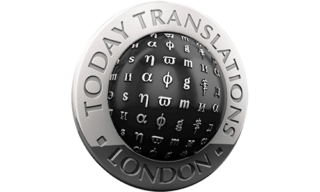The Partha Darshini Seva Trust, an India-based NGO, has revealed it plans to publish and distribute a trilingual dictionary, said to be the first of its kind.
India has always been a bit of a linguistic babel.
The world’s second most populated country (roughly 1.2 billion) has no bona fide or practical official language. Hindi is the official language of the government but is seen by many nationals as a largely unused invention of the 20th century.
English, meanwhile, half a century since India achieved independence, still remains the language of higher education, media, corporate business and much of the judiciary. Despite its dominance, however, English is currently only spoken 10 percent of the population (which still accounts for 125 million people) though that figure is expected quadruple in the next decade (stats taken from the BBC).
The language of India’s much beloved Bollywood film industry, Urdu (also known colloquially as Hindustani), is also only spoken by a concentration of the population – roughly 40 percent of the North’s “cow belt”.
Much of the rest of India, particularly parts of the southern region, is characterised by a plethora of regional dialects; hundred, if not thousands of different vernaculars.
This makes India the perfect setting for an experiment in linguistics and translation. The Times of India reports that in November, the non-governmental organisation, Partha Darshini Seva Trust, which works in improving the welfare of poor students, plans to release a trilingual, Kannada-English-Knokani dictionary.
Said to be the first of its kind, the dictionary will contain more than 50,000 words, as well as a collection of phrases. It will serve as a bridge between the roughly 40 million native Kannada speakers, 7.5 million Konkani speakers and 125 million English speakers (as previously mentioned).
The idea of using India’s most established lingua franca, English, as a common bridge between two different dialects, is particularly interesting in its capacity to bring communities together, particularly in regions located close to one another that share close cultural ties.
Expanding the idea, what is to stop trilingual dictionaries becoming commonplace and featuring wider-spoken languages – say, English-Spanish-Portuguese? Such a dictionary would have practical advantages: with Spanish and Portuguese very much emanating from the same Latin root one could learn the languages almost simultaneously. Demand for these languages would only be further reinforced by their close geographic ties and South America’s ever-expanding economic and trade output.
Basti Vaman Shenoy, president of the Konkani Language and Cultural Foundation, applauded the idea and heralded that it could eventually spread and be used by people across the world in any number of language combinations. The sky’s clearly the limit.
At Today Translations, we value the role language plays in bringing people and communities together, whatever the cause. We have often provided translations in many of India’s plethora of languages, most notably Hindi, Urdu and Punjabi. If you require translation services for any of India’s regional tongues, don’t hesitate to get in touch with us at [email protected] or call us at +44 (0) 207 397 2770

